![]()
![]()
![]()
Use LEFT and RIGHT arrow keys to navigate between flashcards;
Use UP and DOWN arrow keys to flip the card;
H to show hint;
A reads text to speech;
24 Cards in this Set
- Front
- Back
- 3rd side (hint)
|
number of nephrones |
Healthy kidneys contain approximately 1 million indi |
|
|
|
Nephrone parts |
Each nephron consists of a glomerulus, |
|
|
|
Func of nephrone |
which is responsible for ultrafiltration of blood |
|
|
|
func of tub str |
which together are responsible for |
|
|
|
fate of most of glum filtrate |
Under normal circumstances, more than 99% of |
amt of glum filt/day |
|
|
Remainder fluid fate |
The remainder passes through the collecting ducts of multiple nephrons and |
|
|
|
Glomerulus? |
The glomerulus comprises a tightly packed loop of capil |
|
|
|
Bowman's cap? Hist? |
It is surrounded by a cupshaped |
|
|
|
Func of glom? wht is GBM? |
Blood |
which is formed by fusion of the basement membranes |
|
|
How circ molec pass to GBM |
The glomerular capillary endothelial |
Fenestrae |
|
|
Glom epith cell also called? |
Glomerular epithelial cells (podocytes) have multiple |
digitation |
|
|
Func of podocytes? |
As well as maintain |
|
|
|
Loc of mesangial cells |
. Mesangial cells lie in |
property |
|
|
Protein size permeable |
Under normal circumstances, the glomerulus is |
|
|
|
b/w 20 -67kDA dep upon? |
The ability of molecules between 20 and 67 kDa |
|
|
|
Lipid filteration |
Very little lipid is filtered by the glomerulus |
|
|
|
Autoregulation of BP in Glom? |
Filtration pressure at the glomerulus is normally |
|
|
|
When is Renin Secreted? wht it cleaves? to release? cleaved by? to prd? |
When there is a reduction in renal perfusion pressure, renin is released by specialised smooth muscle cells in the juxtaglomerular apparatus. Renin cleaves angiotensinogen |
|
|
|
Short term rest of glom perf pressure |
This restores glomerular perfusion pressure in the short term by causing vasoconstriction |
|
|
|
long term |
In the longer term, |
|
|
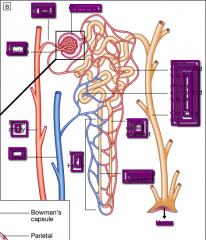
|
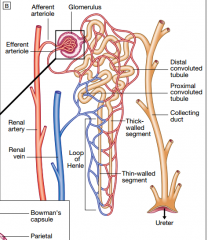
|
|
|
|
Histology of a normal glomerulus |
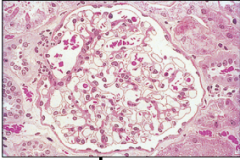
Histology of a normal glomerulus |
|
|
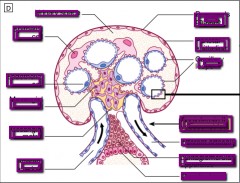
|
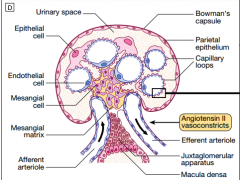
|
Schematic cross-section of a glomerulus, showing five |
|

|
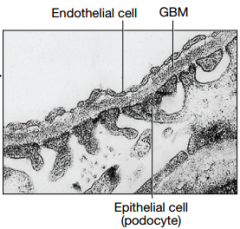
|
Electron micrograph of the filtration barrier. (GBM =glomerular basement membrane |

